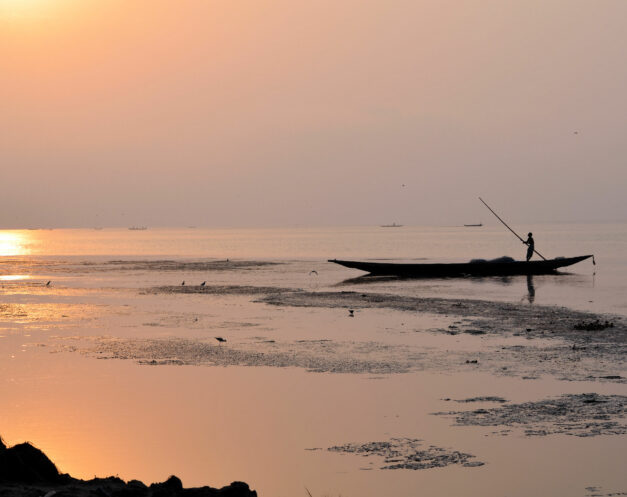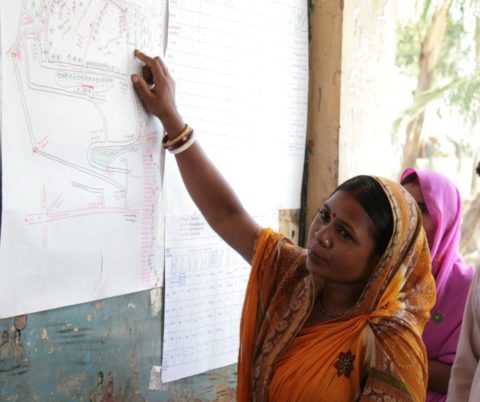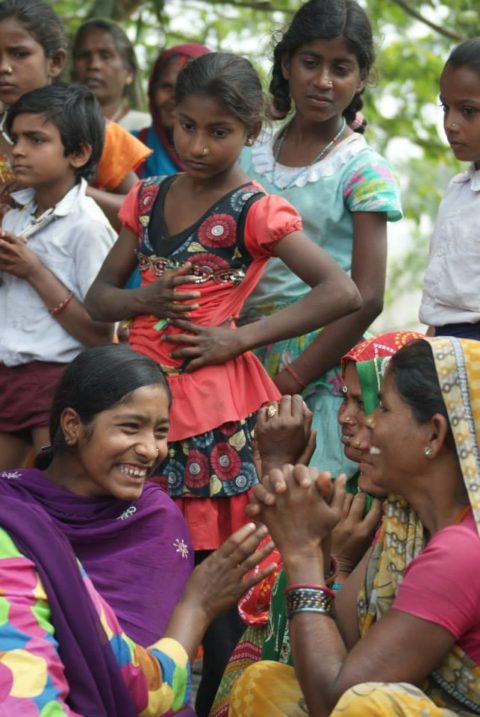Empowered communities mobilise government funds to increase their flood safety

The northern state of Bihar is one of the least developed states in India, and almost yearly hit by serious floods. Every year during the monsoon, flooded main rivers cause serious damages, and often loss of lives and livestock. Floods in Bihar over the last 3 years have affected 26.2 million people and claimed 1000 lives, with losses of over Rs 1,21,91,00, 000 that is 1.56 million euro reported. Property damage from floods in 2015-16 was Rs 119 crore/ 15 million euro, crop damage in 2015-16 worth Rs 519 crore/ 66 million euro. (Economic losses from floods in 2017 are yet to be shared by the government.)
Partners for Resilience (PfR) has been supporting local communities in 90 villages in 6 districts in Bihar since 2011 (89 villages in phase 2). Booktha in one of the villages where PfR has been active. During the first phase PfR has supported the villagers to conduct a hazard, vulnerability and capacity mapping. A risk analysis was completed based on that mapping. The risk analysis provided the basis for the Disaster Risk Reduction Action Plan, consisting of a contingency plan for better flood preparedness and a village development plan aiming at reducing the disaster risk. The villagers themselves now monitor, update and implement the DRR action plan.

The best way of taking this DRR action plan forward is that the local communities bring these DRR action plans for discussion and approval in the Gram Sabha meetings, and that they become part of the Panchayat (local) government planning. Then the Panchayat leaders have then a strong instrument to engage in conversations at the municipal level, where district level funding decisions are being taken. Next to that, with the help and training of PfR, different government schemes and subsidies can be mobilised for the implementation at both household as well as at community level DRR measures. This procedure has been enabled for members of Booktha community, which has led to changes people could not even imagine.
This is how, more general information on government schemes has been mobilised for villages in Bihar. Total amount mobilised for additional support was 5 million euro in 2018. 0.2 million euro in 2017, .08 million euro in 2016,: 0.2 million euro in 2014-2015 and from 2011-2013 1.2 million Euro. These schemes included-
- MNREGA for ecosystem restoration: for plantation work, desiltation and rejuvenation of wetlands.
- Pradhan Mantri Awas Yojna: for rebuilding and constructing houses.
- Swach Bharat Abhiyan/Panchayat Swakshta mission: for constructing toilets and plinths.
- Panchayat Vikas Nidhi scheme: for general development work

“For any new development in our village, we now first consider the possible risks and make sure that planned investments are risk proof,”- Local Booktha villager.
Also in Booktha village, funds have been mobilised for housing, building higher entrances, sanitation, roads, better seeds, organic farming, fruit trees, digging or rejuvenation of ponds, introduction of fishing, and embankment construction.
While asking villagers about the most significant change, they all answered the same: “The village is well organised now, and we have learnt how to approach the government and how to access funding for our DRR Action Plans”.
Mr Achhelal Padean, DRR committee member in Booktha, commented, “All villages in India should develop and implement DRR plans, as it really has changed our lives in a positive way: our experiences should be replicated!”
This programme is being implemented under the Partners for Resilience consortium.
Authors:
Dushyant Mohil, Marlou Geurts, Anjan Bag, Abhishek Kumar
